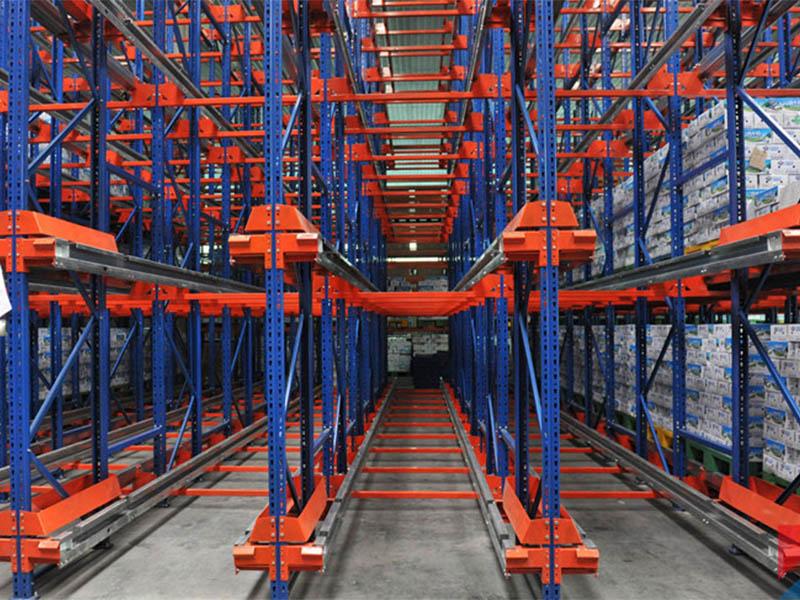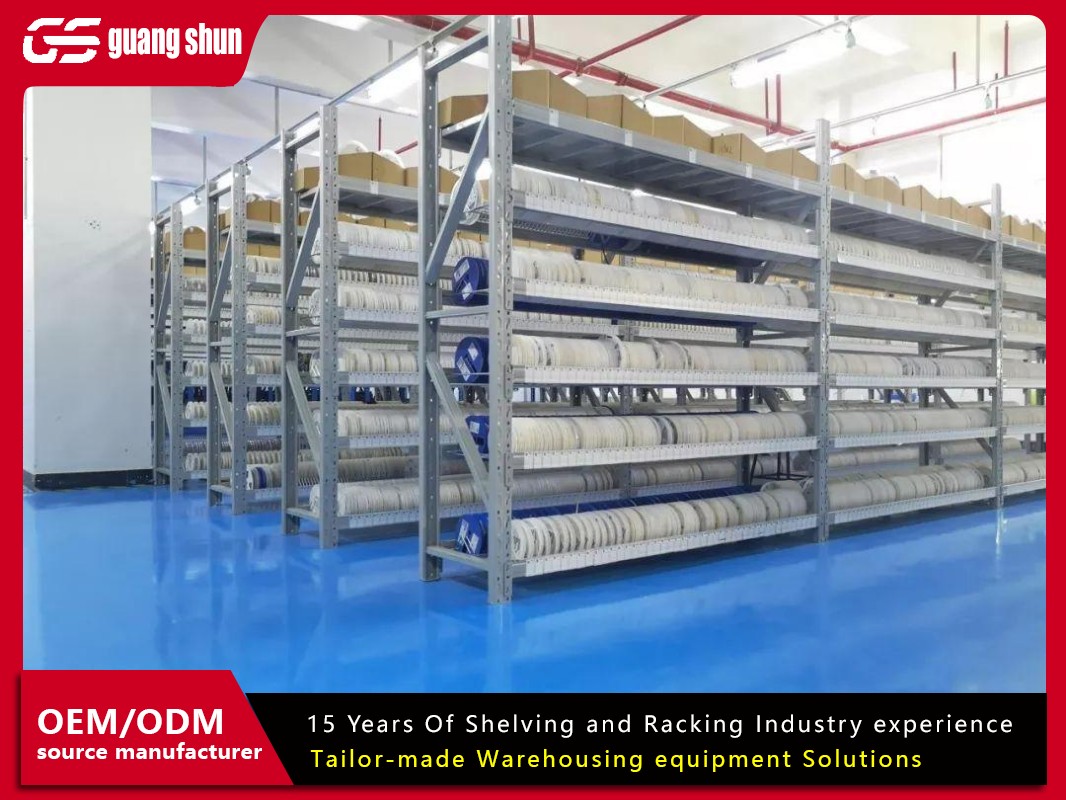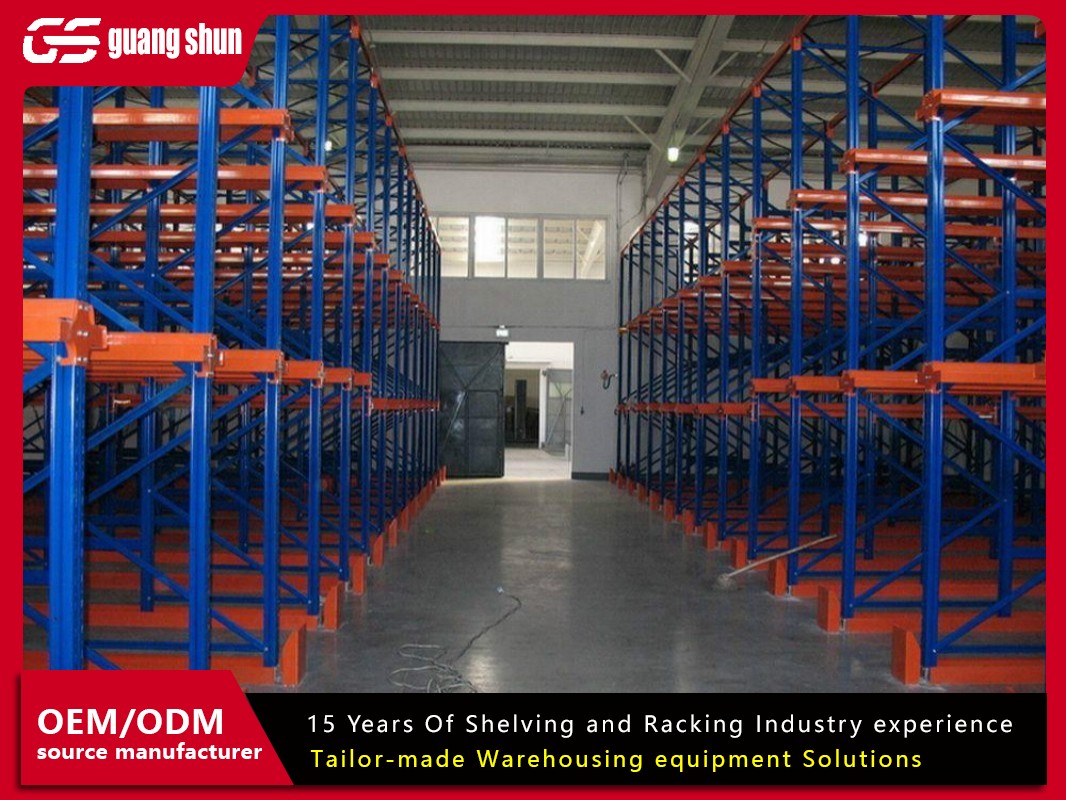In the relentless pursuit of optimizing warehouse space and operational efficiency, storage solutions play a pivotal role. Among the various pallet racking configurations available, double deep pallet racking stands out as a strategic middle ground, offering significant storage density gains over selective racking while maintaining better accessibility than denser systems like drive-in or push-back racking. This article delves deep into the world of double deep pallet racking, exploring its structure, advantages, operational requirements, design considerations, ideal use cases, and how it compares to alternatives. Understanding this system is crucial for warehouse managers seeking the optimal balance between space utilization and inventory accessibility.

1. What is Double Deep Pallet Racking and How Does it Work?
Double deep pallet racking is a specific configuration within the adjustable pallet racking (APR) family. As the name implies, it involves storing pallets two deep within each bay, rather than the single-deep setup of traditional selective racking.
•Structure: It utilizes standard upright frames and beams, identical in principle to selective racking. The key structural difference lies in the bay depth. Frames are spaced further apart to accommodate two pallets stored back-to-back along the depth of the rack.
•Operational Mechanism: Unlike selective racking where every pallet is directly accessible from the aisle, double deep racking requires specialized handling equipment. Deep-reach forklifts or very narrow aisle (VNA) trucks equipped with telescoping forks are essential. These forks extend beyond the length of the truck to reach the second pallet position behind the front pallet.
•Storage Pattern: Each bay holds two pallets of the same SKU stacked side-by-side in depth. Pallets are loaded and unloaded from the front aisle. To access the rear pallet, the front pallet must either be removed first or temporarily moved (though this is less common with deep-reach technology).
This configuration effectively reduces the number of aisles required compared to selective racking, directly translating into higher storage density.
2. Key Advantages: Increased Storage Density & Cost Efficiency
The primary driver for implementing double deep pallet racking is its ability to significantly boost storage capacity within the same warehouse footprint.
•Reduced Aisles: By storing pallets two deep, double deep racking eliminates approximately 50% of the aisles needed compared to a single-deep selective layout serving the same number of pallet positions. This is where the major space savings occur.
•Higher Cube Utilization: The consolidation of aisles allows for more actual storage positions per square foot/meter. Typical density increases range from 40% to 50% compared to selective racking, though the exact figure depends on building dimensions, pallet sizes, and aisle widths.
•Lower Real Estate Costs: Increased density means you can store more inventory within your existing building, potentially delaying costly expansion or relocation. Alternatively, a new facility can be designed smaller for the same storage volume.
•Reduced Cost per Pallet Position: While requiring specialized equipment, the overall cost per stored pallet (considering building costs, racking investment, and operational overhead) is often lower in a double deep racking system compared to selective due to the vastly improved space utilization.
•Better Space Utilization Than Drive-In/Thru: While not as dense as drive-in or push-back racking, double deep racking offers a better balance for operations requiring higher selectivity than those systems allow.

3. Operational Considerations: Equipment, Accessibility, and Stock Rotation
While offering density benefits, double deep pallet racking introduces specific operational requirements and constraints that must be carefully managed.
•Specialized Equipment Requirement: This is non-negotiable. Standard counterbalance forklifts cannot operate effectively in a double deep racking system. Deep-reach trucks (with forks that extend 8-10 feet) or VNA trucks are mandatory for accessing the second pallet position. This represents a significant investment.
•Reduced Selectivity (LIFO Principle): Double deep racking inherently operates on a Last-In, First-Out (LIFO) basis for pallets within the same lane. The rear pallet cannot be accessed without first removing the front pallet. This makes it less suitable for highly date-sensitive inventory requiring strict First-In, First-Out (FIFO) rotation unless managed on a lane-by-lane basis with dedicated SKUs per lane.
•SKU Concentration: To maximize efficiency and minimize double-handling, it's optimal to store multiple pallets of the same SKU within each double deep lane. Systems work best with medium to high-volume SKUs where pallets are added and depleted in quantities that keep the lanes relatively full of the same product. Low-volume SKUs with slow turnover can lead to inefficient lane usage.
•Throughput Considerations: Accessing rear pallets takes slightly longer than accessing front pallets in a selective system due to the need for fork extension. While deep-reach trucks are efficient, overall throughput per aisle might be marginally lower than selective racking with wide aisles and standard trucks. However, the reduced number of aisles often balances this out.
•Aisle Width: Aisle width in a double deep racking setup is determined by the turning radius and maneuverability of the deep-reach or VNA forklifts being used. These aisles are significantly narrower than those needed for counterbalance trucks (typically 10-12 feet / 3.0-3.6 meters for deep-reach) but wider than aisles used with VNA turret trucks in single-deep applications.
4. Design and Configuration Specifications
Designing an effective double deep pallet racking system requires careful planning and adherence to specific parameters.
•Frame Spacing (Bay Depth): Frames must be spaced to accommodate two pallets deep plus necessary clearances. Typically, this means a bay depth of approximately 2 x pallet depth + 6-12 inches (150-300mm) for operational clearance. For standard 48" deep pallets, bay depths are often around 120-126 inches (10.5 feet).
•Load Beam Length and Capacity: Beams need to be long enough to span the increased bay depth and must be rated for the combined weight of two pallets stored on each beam level. Beam capacity is a critical calculation.
•Frame Upright Strength: Upright frames must be selected to handle the increased load per bay, especially considering the potential for uneven loading if front and rear pallets are of different weights.
•Back-to-Back Configuration: Double deep racking bays are almost always installed in a back-to-back configuration. This means two sets of double deep bays face each other across an aisle. The frames on the "back" side of each set are typically connected by row spacers for stability.
•Clearances: Adequate vertical clearance between pallets (usually 4-6 inches) and between the top of the load and the next beam level is essential. Horizontal clearance between pallets side-by-side (within the bay) and between pallets and the uprights must also be factored in.
•Safety Considerations: Design must incorporate seismic considerations if applicable, proper anchoring, and potentially column or rack protectors due to the narrower aisles. Load signage is crucial. The structural integrity under potential uneven loading scenarios must be verified.
•Integration with Warehouse Layout: The double deep racking zones need to be strategically placed within the warehouse layout, considering receiving, shipping, staging areas, and picking zones (which might still use selective racking).
5. Comparing Double Deep to Other Pallet Racking Systems
Understanding where double deep pallet racking fits within the spectrum of storage solutions is key.
•vs. Selective Racking:Double Deep: ~40-50% higher density, requires deep-reach/VNA trucks, LIFO within lanes, lower cost per pallet position overall, lower selectivity.Selective: 100% direct access to every pallet (FIFO/LIFO possible per SKU), uses standard forklifts (wider aisles), highest selectivity, lowest density.
•vs. Drive-In/Drive-Thru Racking:Double Deep: Higher selectivity (access to 2 SKUs per bay vs. 1 per lane in drive-in), faster access to individual pallets (no driving into the lane), requires slightly wider aisles, lower density than drive-in.Drive-In/Thru: Highest possible density (pallets stored 5-10+ deep), operates on LIFO (Drive-In) or FIFO/LIFO (Drive-Thru), requires specialized forklifts, very low selectivity, higher risk of damage, slower access to rear pallets.
•vs. Push-Back Racking:Double Deep: Generally lower cost per position than push-back, simpler structure, lower density than push-back (typically 2-5 pallets deep).Push-Back: Higher density than double deep (stores 2-6 pallets deep per lane on dynamic carts), operates on LIFO, better selectivity within a lane than drive-in (each pallet accessible), requires specialized carts and inclined rails, higher initial cost per position than double deep.
6. Cost Analysis and Return on Investment (ROI)
Implementing double deep pallet racking involves specific costs, but the ROI can be compelling.
•Initial Investment:Racking Cost: Slightly higher per linear foot than selective racking due to longer beams and potentially heavier-duty frames, but significantly lower per pallet position due to density.Equipment Cost: Substantial investment in deep-reach forklifts or VNA trucks (significantly more expensive than standard counterbalance trucks).Installation Cost: Similar complexity to selective racking installation, but potentially more floor anchoring points due to stability needs. Back-to-back configuration adds some complexity.
•Operational Costs:Labor: Forklift operator skill requirements are higher for deep-reach/VNA trucks, but fewer aisles may reduce total travel time.Maintenance: Specialized equipment may have higher maintenance costs than standard forklifts.Building Costs (New Construction): Potential for significant savings on building size/roof structure due to higher density.
•ROI Calculation: The primary ROI driver is the reduced cost per pallet position. Calculate:Cost of racking & equipment for double deep vs. selective (or other system) for the same required pallet capacity.Factor in potential building cost savings (if applicable).Consider ongoing operational efficiency gains/losses (throughput, labor).Factor in inventory carrying cost savings from potentially needing less space.The high space utilization typically leads to a favorable ROI, especially in areas with high real estate or construction costs, provided the operational constraints (LIFO, SKU concentration) are manageable.
Double deep pallet racking presents a powerful solution for warehouses prioritizing storage density without completely sacrificing accessibility, particularly when compared to drive-in or push-back systems. Its ~40-50% density increase over selective racking translates directly into tangible cost savings on real estate or allows for significant inventory growth within an existing footprint.
The decision hinges on several factors:
•Inventory Profile: It excels with medium-to-high volume SKUs where multiple pallets of the same product are stored and where LIFO stock rotation is acceptable.
•Equipment Investment: The necessity of deep-reach or VNA forklifts is a critical cost and operational factor.
•Throughput vs. Storage: It balances density reasonably well with accessibility, though individual pallet access is slower than selective racking.
•Building Constraints: It's an excellent solution for maximizing cube utilization in existing facilities with reasonable clear heights.
By carefully weighing the significant space savings against the requirements for specialized equipment and LIFO inventory management, businesses can determine if double deep pallet racking is the strategic key to unlocking greater warehouse efficiency and cost-effectiveness. Consulting with a qualified racking design and material handling equipment specialist is highly recommended to model specific scenarios and ensure a successful implementation.







